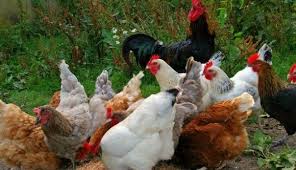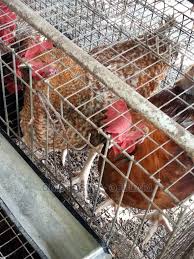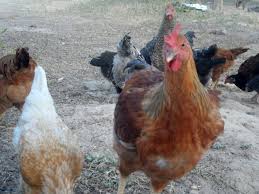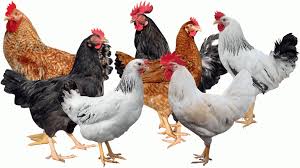Noiler chickens are a dual-purpose breed developed to thrive in African climates, providing both meat and eggs. They are hardy, fast-growing, and low-maintenance, making them suitable for small-scale and rural farmers.
Noilers are resistant to common poultry diseases, adaptable to free-range or semi-intensive systems, and can reach market weight in about 12 weeks while laying approximately 150-200 eggs annually. This breed is an affordable and sustainable option for improving food security and income generation.
Noiler chickens are a practical and profitable choice for farmers in Africa, offering a sustainable way to boost meat and egg production. Their resilience and low cost of rearing make them a transformative breed in regions with limited agricultural resources.
Characteristics of Noiler Chickens

Noiler chickens are a breed developed for dual-purpose production, providing both meat and eggs. Here are some of their key characteristics:
1. Hybrid Origin: Noiler chickens are a crossbreed, typically between local chickens and exotic breeds. This hybridization enhances their performance in various environments.
2. Growth Rate: They have a fast growth rate, reaching market weight quicker than many traditional breeds, which makes them suitable for meat production.
3. Hardiness: Noiler chickens are known for their adaptability to different environmental conditions. They can thrive in both free-range and intensive farming systems.
4. Meat Quality: They produce high-quality meat that is flavorful and tender, making them a popular choice for local markets.
5. Egg Production: While primarily bred for meat, Noiler chickens also lay a reasonable number of eggs, providing an additional source of income for farmers.
6. Feed Efficiency: Noiler chickens are generally more feed-efficient than some traditional breeds, meaning they convert feed into body mass effectively.
7. Physical Appearance: They typically have a good body conformation with a broad breast, muscular build, and a feathered body. The plumage can vary in color, but they usually have a distinctive pattern.
Advantages of Raising Noiler Chickens
Raising Noiler chickens comes with several advantages, particularly for small-scale and commercial poultry farmers:
1. Dual-Purpose: Noiler chickens provide both meat and eggs, allowing farmers to diversify their income streams.
2. High Growth Rate: Their rapid growth enables farmers to achieve quicker returns on investment, reducing the time between hatching and market.
3. Adaptability: Noiler chickens can thrive in various climates and management systems, making them suitable for different farming practices.
4. Lower Production Costs: They are relatively low-maintenance and require less intensive care compared to some other commercial breeds, helping to reduce overall production costs.
5. Good Market Demand: The quality of meat and eggs produced by Noiler chickens is often well-received in local markets, enhancing profitability for farmers.
6. Disease Resistance: They exhibit a higher resistance to diseases compared to some other poultry breeds, which can lead to lower mortality rates and reduced veterinary costs.
7. Sustainability: Noiler chickens can be raised on farm by-products and local feed resources, promoting sustainable farming practices.
Read Also: CAUSES AND SOLUTIONS OF EGG GLUT IN EGG PRODUCTION
Housing Requirements for Noiler Chickens

Proper housing is essential for the health and productivity of Noiler chickens. Here are the key housing requirements:
1. Space: Provide enough space per bird to prevent overcrowding. A general guideline is about 2 to 3 square feet per bird in a coop. For free-range systems, larger areas should be allocated.
2. Ventilation: Ensure good ventilation in the housing to maintain air quality and regulate temperature. This helps reduce the risk of respiratory diseases.
3. Protection from Predators: The housing should be secure from predators such as snakes, foxes, and birds of prey. Use strong materials for the walls and roof, and ensure windows and doors are securely locked.
4. Nesting Boxes: Include nesting boxes for egg-laying, ensuring they are clean, comfortable, and easily accessible. A ratio of one nesting box for every 3 to 4 hens is usually sufficient.
5. Roosting Space: Provide adequate roosting space, as chickens prefer to sleep off the ground. Use sturdy roosting bars at a height comfortable for the birds.
6. Cleanliness: Design the housing for easy cleaning to maintain hygiene. Regularly remove waste and replace bedding to reduce the risk of disease.
7. Water and Feed Stations: Ensure that there are adequate water and feed stations in the housing to prevent competition and ensure all birds have access to food and water.
8. Temperature Control: In areas with extreme temperatures, consider adding heating or cooling systems to maintain a comfortable environment for the birds.
Feeding and Nutrition of Noiler Chickens
Feeding and nutrition play a crucial role in the growth and productivity of Noiler chickens. Here are key aspects to consider:
1. Balanced Diet: Noiler chickens require a balanced diet that includes protein, carbohydrates, fats, vitamins, and minerals. A typical diet consists of:
i. Starter Feed: For chicks (0-3 weeks), use a starter feed with 20-24% protein to support rapid growth.
ii. Grower Feed: For young birds (3-8 weeks), transition to a grower feed with 16-20% protein to maintain growth rates.
iii. Finisher Feed: For finishing birds (8 weeks to market), use finisher feed with 14-16% protein to prepare them for sale.
2. Ingredients: Common ingredients in Noiler chicken feed include corn, soybean meal, wheat bran, fish meal, and mineral supplements. The inclusion of these ingredients ensures they receive necessary nutrients.
3. Feeding Schedule: Provide feed at regular intervals to ensure consistent nutrient intake. Generally, birds should have access to feed at all times, particularly in their growing stages.
4. Water Availability: Always provide fresh, clean water to the chickens. Proper hydration is essential for digestion and overall health.
5. Supplementation: Consider adding vitamins and minerals, especially during periods of stress, growth spurts, or when transitioning to new feed.
6. Adjustments Based on Age and Weight: Monitor the chickens’ growth and adjust feed types and amounts based on their age, weight, and production goals.
Read Also: How to Increase Egg Production in Commercial Layers
Breeding Noiler Chickens

Breeding Noiler chickens effectively involves several key practices to maintain and improve stock quality:
1. Selecting Breeding Stock: Choose healthy, strong birds with desirable traits (good body conformation, fast growth, and high egg production) as breeding stock. Both male and female birds should be selected based on these traits.
2. Breeding Ratio: Maintain a proper breeding ratio of males to females. A common ratio is 1 male to 10-12 females to ensure successful mating and fertile eggs.
3. Breeding Techniques: Utilize natural mating or artificial insemination methods based on your farming setup and goals. Natural mating is simpler, while artificial insemination can enhance genetic diversity.
4. Egg Production: Monitor egg production in hens. Collect eggs daily and store them properly if not incubating immediately. Ensure hens are in optimal health to maintain egg production rates.
5. Incubation: If incubating eggs, maintain proper temperature (around 99.5°F) and humidity (about 50-55%) in the incubator. Turn eggs regularly to promote healthy embryo development.
6. Chick Rearing: Once the chicks hatch, provide a warm, clean environment with adequate nutrition and water. Monitor their growth closely during the early weeks.
Health Management for Noiler Chickens
Effective health management practices are vital for maintaining the well-being and productivity of Noiler chickens:
1. Vaccination: Implement a vaccination program to protect against common poultry diseases, such as Newcastle disease, infectious bronchitis, and fowl pox. Consult a veterinarian for an appropriate vaccination schedule.
2. Biosecurity Measures: Enforce strict biosecurity protocols to minimize disease risks. This includes controlling access to the farm, sanitizing equipment, and regularly cleaning the housing environment.
3. Regular Health Checks: Conduct routine health assessments to identify any signs of illness or distress. Monitor behavior, appetite, and physical condition to catch health issues early.
4. Parasite Control: Regularly check for internal and external parasites, such as worms, mites, and lice. Use appropriate treatments as needed and maintain a clean environment to reduce infestations.
5. Nutritional Support: Provide balanced nutrition and proper hydration to support immune function and overall health.
6. Stress Management: Minimize stressors such as overcrowding, poor ventilation, and extreme temperatures, as these can negatively impact health.
Common Diseases Affecting Noiler Chickens
Noiler chickens can be susceptible to various diseases, which can affect their health and productivity:
1. Newcastle Disease: A highly contagious viral disease that affects the respiratory, digestive, and nervous systems. Symptoms include coughing, sneezing, and lethargy. Vaccination is essential for prevention.
2. Infectious Bronchitis: This viral infection primarily affects the respiratory system, leading to coughing, nasal discharge, and reduced egg production. Vaccination can help control outbreaks.
3. Coccidiosis: A parasitic disease caused by protozoa affecting the intestinal tract. Symptoms include diarrhea, poor weight gain, and lethargy. Anticoccidial medications and proper sanitation can help manage this disease.
4. Fowl Pox: A viral infection characterized by lesions on the skin and in the mouth. It can be prevented through vaccination and maintaining good biosecurity practices.
5. Salmonella: A bacterial infection that can cause severe gastrointestinal issues. It can be transmitted through contaminated feed or water, so ensuring good sanitation is crucial.
6. Marek’s Disease: A viral disease affecting the nervous system and immune response, leading to paralysis and increased mortality. Vaccination at hatch can help prevent this disease.
Disadvantages of Noiler Chickens
While Noiler chickens offer several advantages, there are also some disadvantages to consider:
1. Slower Growth Rate: Compared to conventional broilers, Noiler chickens may have a slower growth rate. This means they may take longer to reach market weight, affecting profitability.
2. Lower Egg Production: Noiler chickens are dual-purpose (meat and egg production), but their egg-laying capacity is generally lower than that of dedicated layers. This may not meet the demands of farms focused primarily on egg production.
3. Market Acceptance: In some regions, consumers may prefer specific breeds for meat or eggs. Noiler chickens may face challenges in terms of market acceptance compared to well-known breeds.
4. Management Requirements: Raising Noiler chickens may require more management effort, particularly in balancing their dual-purpose needs for meat and egg production, which can complicate feeding and care strategies.
5. Disease Susceptibility: Like all chickens, Noiler chickens can be susceptible to diseases if not managed properly. This includes the need for vaccinations and biosecurity measures to prevent outbreaks.
Does Noiler Lay Eggs Every Day?
Noiler chickens do not lay eggs every day like specialized layer breeds. Instead, they typically lay around 3-5 eggs per week, depending on factors such as age, nutrition, and environmental conditions. The egg production rate is lower than that of commercial layers, which can lay 5-6 eggs per week or more.
Difference Between Noiler and Layers
Here are the key differences between Noiler chickens and layer chickens:
| Aspect | Noiler Chickens | Layer Chickens |
|---|---|---|
| Purpose | Dual-purpose (meat and egg production) | Primarily for egg production |
| Growth Rate | Slower growth rate | Faster growth rate |
| Egg Production | 3-5 eggs per week | 5-6 eggs per week or more |
| Meat Quality | Good meat quality, more flavor | Less flavor, primarily bred for egg output |
| Management | Requires balanced management for meat and egg production | Focused on maximizing egg production |
| Market Demand | May face acceptance challenges in some markets | Widely accepted and in high demand |
Do you have any questions, suggestions, or contributions? If so, please feel free to use the comment box below to share your thoughts. We also encourage you to kindly share this information with others who might benefit from it. Since we can’t reach everyone at once, we truly appreciate your help in spreading the word. Thank you so much for your support and for sharing!
Read Also: Homeowners Insurance Complete Guide

